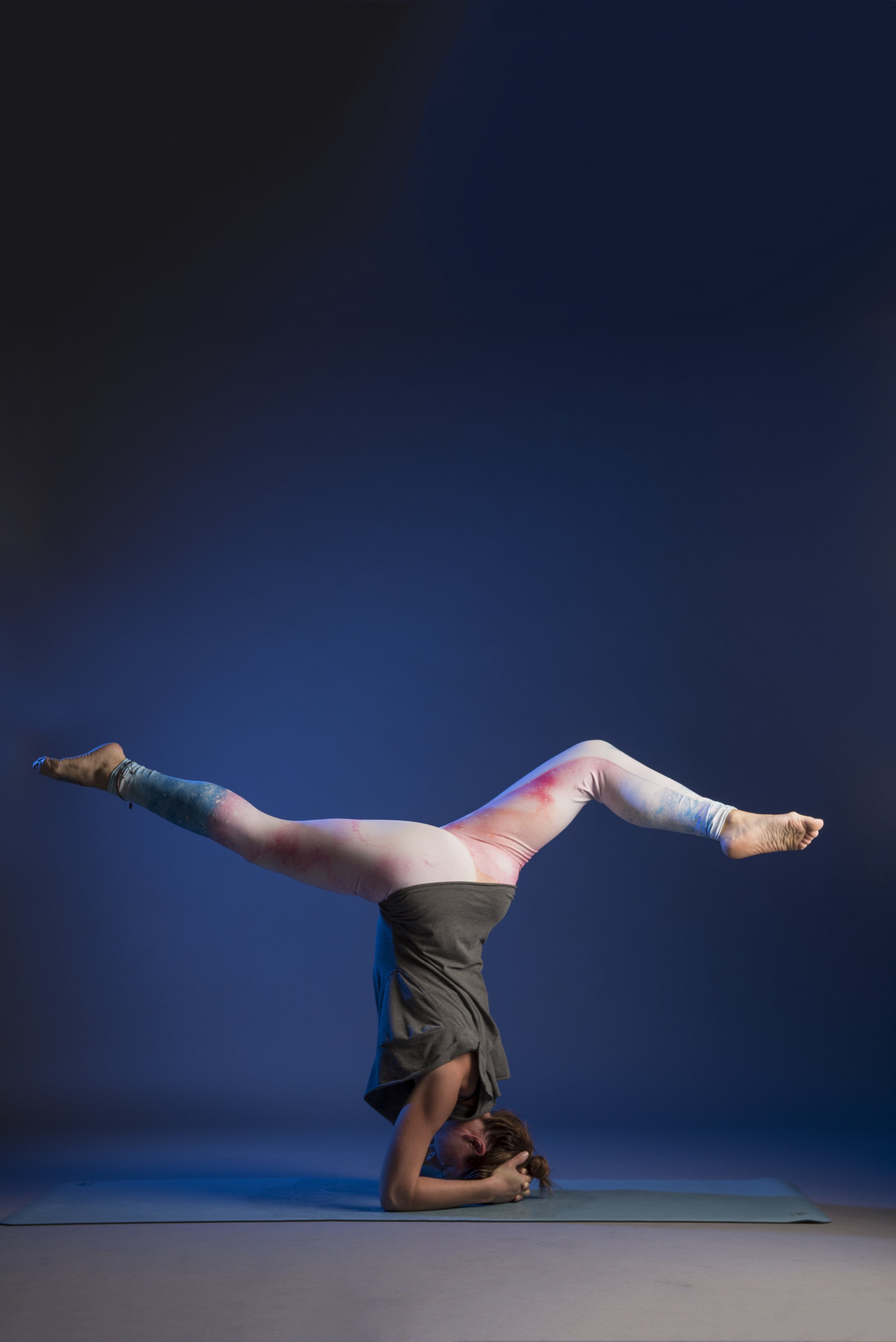Working on Headstand and Forearm Balance
/It's been a while since I regularly practiced headstand and forearm balance and I have to say, I greatly miss Dharma Yoga Evanston, where those two postures were a constant part of class!
Fortunately, though, I have the learned the foundational information needed to get in and out of the postures safely on my own, and I am adding them back into my routine.
Today I wanted to share a little advice for those of you practicing these postures, or thinking about learning them.
Tip #1:
In the beginning, practice with a teacher.
It's very important to learn the right way when it comes to inversions, so that you're safe and so you set up good habits. You want to be sure to avoid shoulder and neck strain. Listen carefully and watch your teacher, thinking to yourself, "That is me." Envision yourself in the pose before you are even in it.
Tip #2: Learn how to fall.
The scariest part about inversions is the thought of falling on your head, right? Well, you take that fear away if you practice what it feels like to fall. Remember to tuck your head (chin to chest) and you will protect your neck and spine. Again, this is a great thing to do early on with an instructor present. Once you've pushed through the point of balancing in the pose several times, forcing yourself to fall, you begin to learn where your edge is.
Tip #3: Use the wall conscientiously.
When I first learned headstand, I practiced it a lot at home in front of the wall. Then, when I tried it in class, I immediately felt myself tipping forward, to that place where the wall used to be. For a brief moment I had no idea how to stop myself from falling -- so I did. I hadn't yet learned the way you must fire up all of your back muscles and glutes in order to prevent yourself from tipping forward.
While I think utilizing a wall to learn headstand and forearm balance early on is great, it's also important not to let it become a crutch. As soon as you feel remotely comfortable with the pose, move away from the wall. Challenge yourself to trust your body. And if you're in a class with a bunch of other yogis, allow the energy in the room to inspire you.
Photo via
.
Tip #4: Practice awareness of your mind as you try these poses.
Inversions tend to ignite fear in us.
Eventually you will need to use your own resolve to face the fear, and to ignore the flight-or-fight response your nervous system may produce.
As long as you take the right steps to learn the right way into and out of the posture, know that you are safe. Trust in what your teacher has shown you, and trust that your body is capable of incredible things. Learn to let go of your resistance to the postures themselves.
You know you are moving in the right direction when you don't feel your heart drop at the mention of the pose in class. Instead of slowly making your way into the pose, you set a positive example for your fellow yogis, and you launch happily into trying. As long as you are trying, you are achieving what the pose is meant to do.
Tip #5: Learn to play.
These two postures, Sirsasana and Pinchamayurasana, are poses that can take months or even years to realize. Instead of focusing on a specific outcome of your efforts, embrace where you are in that process right here, today.
Are you simply building strength in your shoulders? Are you experimenting with how much effort it takes to kick your legs up the wall? Are you observing the other yogis in class, noting something new about the pose that you've never seen before?
Wherever you are, you are perfect. You are right where you're meant to be.
5 Ways to Build Confidence for Headstand and Forearm Stand
Headstand (Sirsasana) and Forearm Stand (Pincha Mayurasana) can feel intimidating at first, but with the right approach, they become empowering and joyful. Here are five ways to build strength, stability, and confidence for these inversions:
1. Strengthen Your Foundation
The key to inversions is a strong and stable foundation. Focus on building strength in your shoulders, arms, and core to support your weight.
For Headstand: Practice Dolphin Pose and Forearm Plank to strengthen your shoulders and arms.
For Forearm Stand: Add Push-Ups and Shoulder Taps to your routine to build stability.
Tip: Revisit these foundational poses consistently—they’re the building blocks of your practice.
2. Use the Wall
Practicing with a wall is a game-changer when working toward inversions. The wall provides a safety net while you refine your alignment and balance.
For Headstand: Start by lifting your legs one at a time and resting your feet on the wall for support.
For Forearm Stand: Kick up gently and let the wall catch your feet, giving you time to engage your core and shoulders.
Tip: As you gain confidence, work on pulling your feet slightly away from the wall for short holds.
3. Practice Core-Strengthening Poses
A strong core is essential for controlling your entry into inversions and holding them steady.
Plank Variations: Forearm Plank and Side Plank help build deep core strength.
Boat Pose: Strengthens the lower and upper core muscles.
Leg Lifts: Improves the control needed to lift your legs into inversions without kicking.
Tip: Consistent core work will help you feel more stable and in control when upside down.
4. Learn to Fall Safely
Fear of falling is one of the biggest barriers to inversions. By learning how to fall safely, you’ll eliminate this fear and approach the poses with more confidence.
For Headstand: Practice tucking your chin and rolling forward gently if you lose balance.
For Forearm Stand: Use a wall or soft surface to practice controlled dismounts.
Tip: Falling is part of the process. Treat it as a learning experience rather than a setback.
5. Focus on Your Breath and Mindset
Confidence in inversions isn’t just about physical strength—it’s also about staying calm and focused.
Use Breathwork: Steady, deep breathing keeps you grounded and helps you stay present.
Set an Intention: Approach your practice with curiosity and playfulness instead of self-criticism.
Visualize Success: Picture yourself holding the pose with ease and balance.
Tip: Remember, progress takes time. Celebrate small victories along the way.
The Journey to Confidence
Building confidence for Headstand and Forearm Stand is about consistent practice, patience, and trust in your body. With these five steps, you’ll create a strong foundation and a fearless mindset that makes inversions feel achievable and exciting.
So, roll out your mat, breathe deeply, and enjoy the process—you’ve got this! ✨🧘♀️










Memoir ghostwriting is about transforming your life in the process of writing a beautifully-crafted book. Here’s why my clients often say the healing becomes the most valuable part.